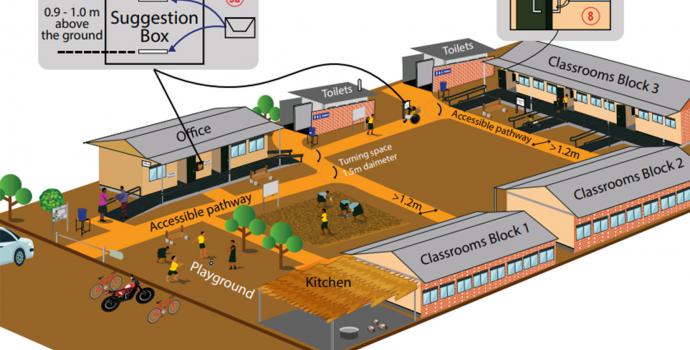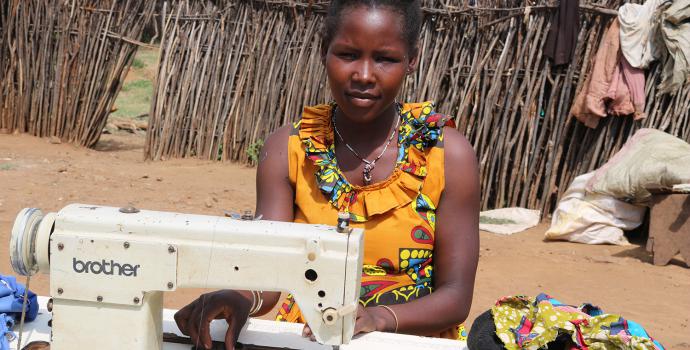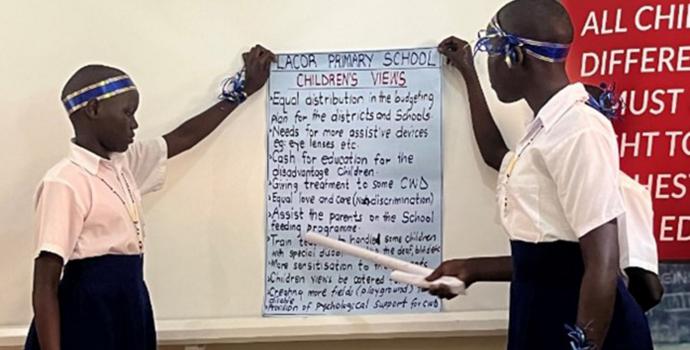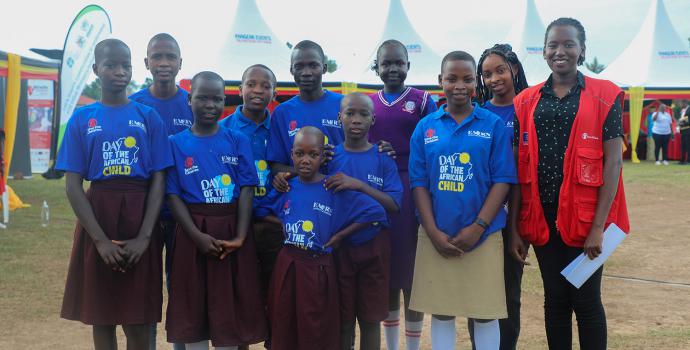Estella: A humanitarian hero

On World Humanitarian Day, we celebrate some of the humanitarian heroes we work with in Uganda.
Estella Alwak has been a refugee for most of her life.
“I first came to Uganda in 1993, when I was very young – just like my daughter is now,” she says, pointing to her 6-month old baby Aparonite. Estella’s family fled the war in South Sudan, and took refuge in a camp in northern Uganda, but they didn’t find safety for long.
“Then there was Kony,” she remembers – the leader of the Lord’s Resistance Army (LRA), which carried out a brutal insurgency across northern Uganda until the mid-2000s. With LRA attacks becoming more frequent, Estella’s family moved again, this time to a place called Kyangwali in southwest Uganda.
She returned to South Sudan as an adult in 2015, but just one year later there was another outbreak of conflict and she had to come back to Uganda.
Back in Kyangwali refugee settlement again, Estella is now a teacher at a school supported by Save the Children.
She teaches in the Accelerated Education Programme (AEP), which uses a condensed version of the Ugandan primary school curriculum to help get refugee children aged 10-17 back into education. Many have had to drop out of school due to fleeing their homes, lack of money, or lack of family support. The AEP helps them to complete the whole primary curriculum in just three years.
“I love my job” says Estella. “I like interacting with children. You need to be close to them and interact with them in a friendly way.”
She teaches English, Religious Education and creative arts in AEP Level 1, which covers the first three years of primary school in one year. The children want to learn, but often the biggest challenge can be getting them to attend. Many have to work to help their families.
“For example, during the planting season the children have to go and work so they often don’t come to school,” Estella says. “A big part of my job is moving from home to home, encouraging people to come. Often the parents are not serious about education – they think it’s better for the child to grow maize in the fields. I try to persuade them of the value of sending their children to school.”
Kyangwali has doubled in size this year due to an influx of new refugees fleeing fighting in eastern DR Congo. Around 80,000 people now live here, most of them Congolese. Estella also speaks fluent Swahili and works as a translator to help recent arrivals, many of whom don’t speak a word of English.
Teaching AEP can be challenging, with a mix of ages, languages and abilities in each class.
Ester, a 14-year old Congolese refugee is now one of Estella’s star pupils, but it hasn’t always been that way. “I went to school for the first time in Uganda,” she says. “I couldn’t go in Congo, but when I arrived here I started to attend the formal school. But then I had to drop out as we didn’t have any money to sit the exams. So I joined the AEP instead. Now I can read and write. I’d like to be a teacher too. My parents are supportive now – they said they will find the fees for my next exams.”
When the children in AEP are ready and have caught up to the required standard they can transition back into the formal primary school system. “It makes me proud when these children who had to drop out of school can transit back into formal school. It shows that the AEP is achieving something important,” Estella says.




